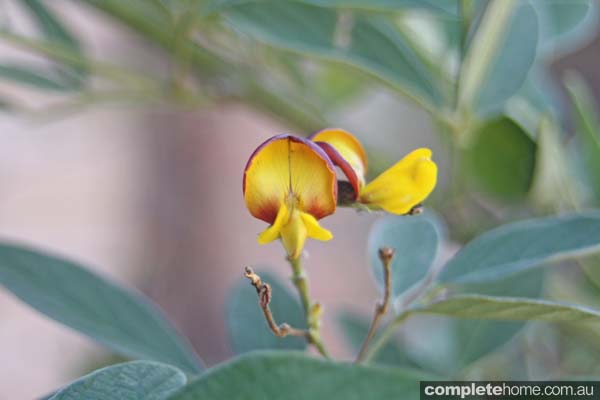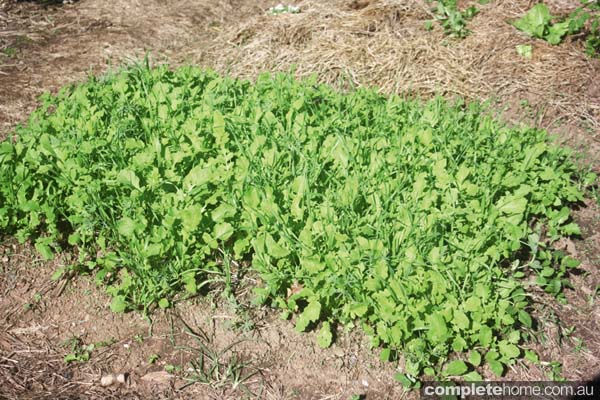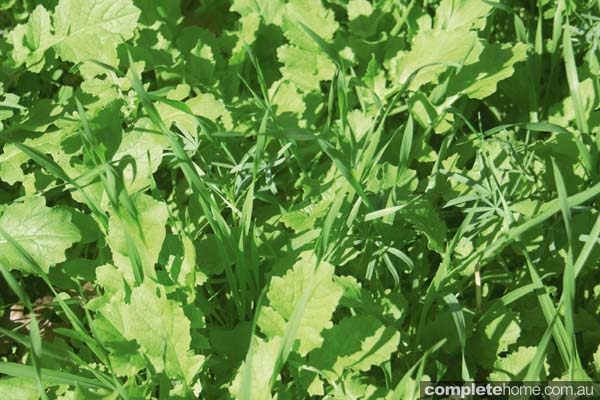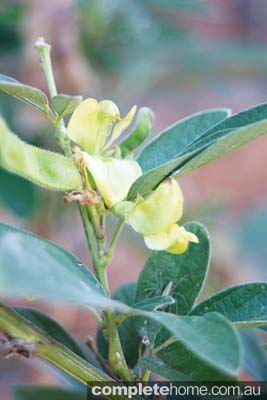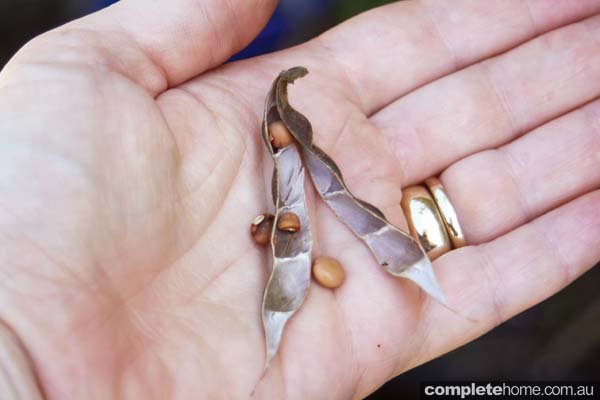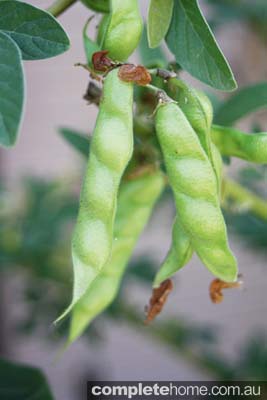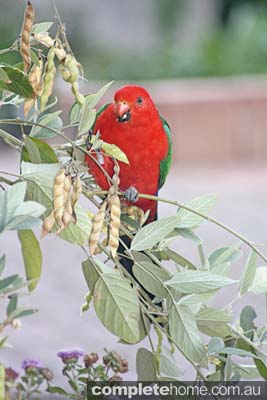Never underestimate the organic benefits of green manure crops, often featuring the humble legume
Whether embarking on creating a new garden or revamping an existing one, many of us are often guilty of dreaming of all the plants we’d like to have in the garden, imagining what we’ll do with the glut of eggplants and the rows of jam jars full of the kilos of fruit produced.
Before we even start designing the gardens and buying plants, what we really should be doing is taking care of the soil and understanding what truly creates a healthy, microbially active, humus-rich, nutrient- and water-retentive soil. The addition of organic matter is a good start and in previous issues I have looked at a wide range of soil additives that can improve and benefit your soil, such as compost, animal manures, zeolite, rock dust minerals and so forth.
But have you thought about growing some green manure crops to add organic matter and possibly even extra nitrogen to your soil? This is an easy and relatively cheap method of doing that. You can sow a green manure crop either in sections of your garden that may be lying fallow or garden beds that are low on organic content and might need an overhaul. This way a bare area of garden won’t become a sea of weeds and, depending on the plant species sown, will fix nitrogen from the soil air.
The soil will also be protected from erosion by wind and heavy rain and the end result, once you turn the green manure back into the soil, will be a more organically rich soil ready for planting the following season.
What is a green manure crop?
Green manure crops are fast-growing, often bulky leguminous crops that are generally incorporated back into the soil. (But keep in mind, not all green manure crops are legumes.)
A green manure crop can:
• Add nitrogen-rich material to the soil
• Help break compacted soil
• Help smother weeds
• Provide habitat and food for beneficial insects
• Prevent soil erosion by stabilising the soil
• Increase the population of soil micro-organisms and worms
• Improve water, air and root penetration in the soil
• Assist in the control of nematodes
• Fill empty garden beds that may be lying fallow with productive, soil-building plants
Types of plants used as green manure crops
Understand that choosing plant species according to the season is very important, as some species do better during the warmer weather while others perform better in the cooler months of the year.
Warm-season green manures
Legumes: cowpea, lablab, mung beans, soybeans, red & white clover
Non-legumes: buckwheat, Japanese and French millet
Cool-season green manures
Legumes: lupins, woolly pod vetch, lucerne, fava beans
Non-legumes: oats, rapeseed, fenugreek, sub clover
How to start your green manure crop
Begin by choosing the right green manure seed mix for the season in which you’re sowing and growing. Be aware that legumes like a soil pH of 6.5–7.5, which is a sweet soil. If your soil pH is too acidic you may need to add dolomite or garden lime. Cultivate the soil in the area you want your green manure crop growing, broadcast the seed mix evenly, then lightly rake in, firm down and water. Most types will need a sunny location. Keep moist during germination and growing unless there is already adequate rainfall.
Note: Seeds should be sown to a depth of 2–3 times the seed width.
Now what?
Most plant species of green manure seed mixes will need to grow for about eight weeks. Once your crops are at the stage of budding up to flower, this is the time to either dig the plants back into the top 15cm of soil or chop them off at ground level. When dug into the soil the crop will decompose reasonably quickly. If you chop the crop off it can be left on top of the soil as mulch.
What is a legume?
One of the distinctive features of legumes is that they produce seed within a pod. They fall into these three plant families: Mimosaceae (wattles), Fabaceae (pea-flowered plants) and Caesalpiniaceae (poinciana). A lot of people think of legumes as a range of peas and beans or green manure crops only grown to a certain stage and then either dug into the soil or chopped off at base level. Indeed, a large percentage of green manure crops are leguminous plants species that are used in this way. But there are legumes that are not just known as fast-growing, bulky crops to be dug in or consumed at the dinner table. For example, some are large, fast-growing shrubs, such as pigeon pea, while others, such as lucerne, are generally grown as a fodder crop for farm animals.
Then there’s the Pinto peanut, which can be grown as a perennial cover crop, acting as a living mulch under and around fruiting trees. There are a lot of legumes to choose from for the organic gardener.
What legumes do
Legumes contribute to the health of soil by building soil fertility and increasing soil microbial activity as well as providing mulch. Legumes are also beneficial in that they can help suppress weed growth, act as a nurse or groundcover crop and provide animal forage and fuel for wood, depending on the species.
The other standout feature of legumes is they can fix nitrogen from the soil air. How is this done? The plant forms a symbiotic relationship with certain soil bacteria, the most common being rhizobium. The bacteria penetrate the legume’s roots, which causes the appearance of small nodules in the root tissue.
The rhizobia take the nitrogen (N2) from the soil air and convert it to the form plants normally obtain from the soil: NH4 or ammonia. This process is called nitrogen fixation. Once the legume has fixed the nitrogen, the nodules in the plant’s roots release it into the soil. For this to occur, the legume needs to be chopped down.
Inoculation
This is where your selected legumes are treated with the correct species of rhizobia to promote the process of nitrogen fixation. There are rhizobia that occur naturally but, to be sure that each legume you sow has the correct rhizobia, it should be done manually.
You’ll find that certain organic garden product suppliers and seed suppliers will send the correct inoculant along with instructions on how to apply it. Most inoculants will need to be stored in the fridge and used within several months before becoming unviable.
Of course, if you’re just looking to add bulk organic matter to your soil and don’t care if nitrogen fixation is occurring, by all means sow your green manure seeds as is, without an inoculant.
Legume profile: pigeon pea
Cajanus cajan or pigeon pea would have to be one of my all-time favourite plants. Growing to around 3m, this fast-growing leguminous shrub bears the most attractive flowers — either gold or lemon-coloured pea-shaped blooms — that are a great food source for a variety of bees and insects. The foliage can be used as a fodder source for a variety of animals, while people can also enjoy the new growth’s peppery taste along with the peas from inside the pods. These peas are commonly made into dhal in countries such as India and Sri Lanka. I find the king parrots at our place adore them as well. And, of course, there is the benefit of nitrogen fixation. As they’re so fast-growing and productive you’ll find your pigeon peas will die off and need replacing every 3–4 years or so. But don’t fret: even for the brownest of thumbs, they’re super-easy to germinate from seed.
Words & photos by Claire Bickle
Originally from Good Organic Gardening magazine, Volume 5 Issue 6
